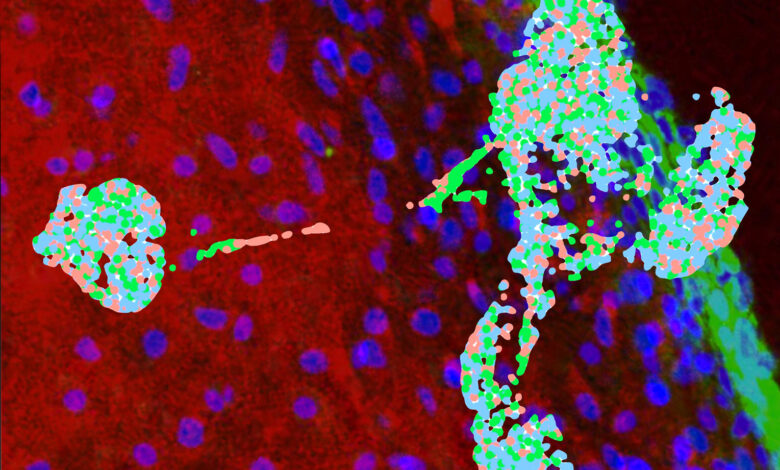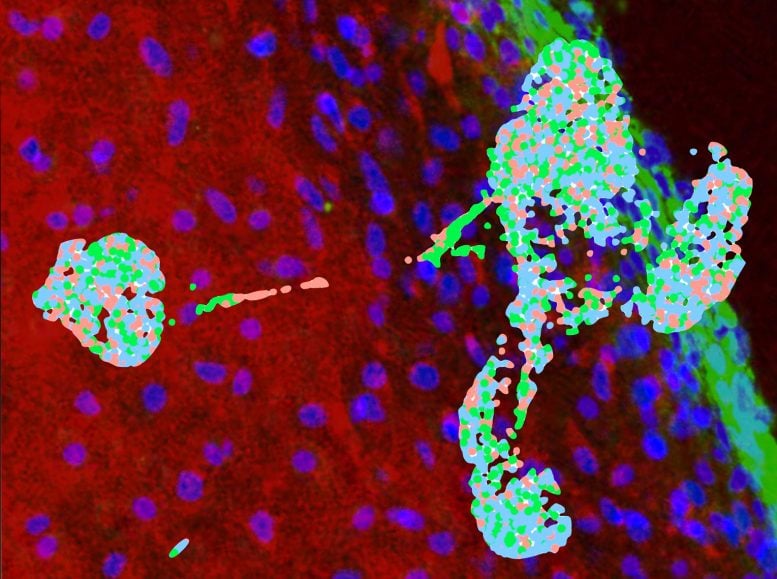Researchers Discover New Way To Generate Human Cartilage


This image shows a graph of gene expression patterns of organoids created in a University of Montana lab transitioning to become cells that form human cartilage. It’s overlaid on a picture of an organoid showing distinct outer and inner layers. Credit: Courtesy of Mark Grimes
University of Montana researchers have developed a new method using stem cells to create craniofacial cartilage, potentially revolutionizing treatments for craniofacial defects and injuries.
Researchers at the University of Montana, along with their collaborators, have developed a novel technique for producing human cartilage in the head and neck areas. Mark Grimes, a professor of biology in UM’s Division of Biological Sciences, explained that they have successfully prompted stem cells to transform into the type of cells that typically form human craniofacial cartilage. Stem cells have the capability to self-renew and differentiate into various cell types.
“The cells that normally give rise to this type of cartilage are called neural crest cells,” Grimes said. “We found a novel method for generating craniofacial organoids from neural crest cells.”
Organoids are a simplified, miniature version of an organ that mimic the architecture and gene expression of the organ. “Organoids are a good model for certain human tissues that we can study in ways that are not possible using tissue from human beings,” he said.
Addressing a Critical Need
Grimes said there is a critical unmet need for new methods to regenerate human cartilage for the 230,000 children born annually in the U.S. with craniofacial defects. Growing cartilage in the laboratory also could lead to effective treatments to repair craniofacial cartilage damage due to injuries.
The researchers studied gene expression data at the RNA and protein level to reveal how cartilage cells arise from stem cells. They revealed that stem cells communicate in the early stages to become elastic cartilage, which makes up human ears.
To accomplish this, the team used extensive analysis of biological markers and machine-learning pattern-recognition techniques to understand the cell signaling pathways involved when cells differentiate into cartilage.
It is difficult to reconstruct natural features such as a person’s ears, nose, or larynx with current plastic surgery techniques, and transplanted tissue is often rejected without immunosuppressants.
“To use patient-derived stem cells to generate craniofacial cartilage in the laboratory, you need to understand the human-specific differentiation mechanisms,” Grimes said. “Our aim is to develop a protocol for craniofacial cartilage generation for transplantation using human stem cells.”
Reference: “Craniofacial chondrogenesis in organoids from human stem cell-derived neural crest cells” by Lauren Foltz, Nagashree Avabhrath, Jean-Marc Lanchy, Tyler Levy, Anthony Possemato, Majd Ariss, Bradley Peterson and Mark Grimes, 28 March 2024, iScience.
DOI: 10.1016/j.isci.2024.109585



